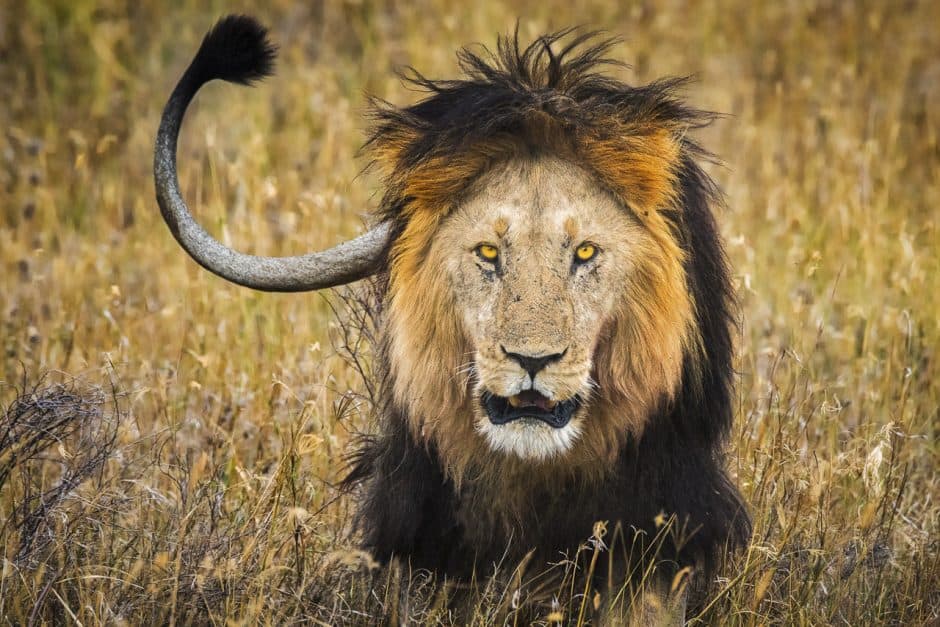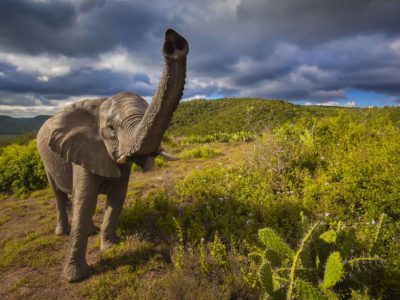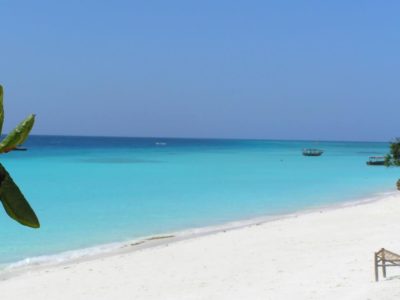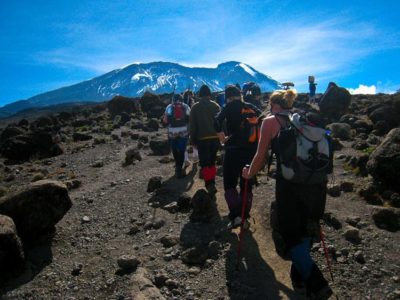Tanzania is a traveler’s dream.
Known for its wilderness areas, this East African country is where you can find the Serengeti National Park, a safari mecca where the “big five” (elephant, lion, leopard, buffalo and rhino) can be found and Kilimanjaro National Park, the home of Africa’s highest mountain.
If wilderness isn’t your thing, then go offshore and spend some time on the tropical islands of Zanzibar and Mafia Marine Park exploring various coral reefs and taking a dip with some whale sharks.
This Tanzania travel guide will help you plan your next vacation.
Table of contents
Table of Contents
Fast Facts about Tanzania
- Tanzanian power voltage is 220V 50Hz; Plug C, E, F & L
- The Tanzania currency is the Tanzanian shilling is and is around 2100 TZS to 1 USD
- Levels of crime seem to increase in Tanzania. Avoid showing signs of wealth and keep valuables out of sight.
- When walking, walk towards the flow of traffic and keep your bags on the side away from the road to prevent them from being snatched by someone in a passing car.
- Several vaccinations are highly recommended including Yellow Fever, Typhoid, Hepatitis A, and hepatitis B.
- Tanzanian visas are available upon arrival, payable in US cash only.
- Beware of Chikungunya, a viral disease transmitted by the bite of infected mosquitoes. This outbreak continues to affect parts Africa. Symptoms can take up to 12 days to appear, but usually begin within 3-7 days after being bitten by an infected mosquito. Symptoms generally include fever and joint pain; other symptoms can include fatigue, headache, nausea, vomiting, muscle pain, and rash.
- The water is not potable; drink only bottled water or bring a SteriPen to Purify your water
Things to See and Do in Tanzania
- Climb Mount Kilimanjaro – I have to clarify a giant misconception about Mt. Kilimanjaro. It is not easy!
- Go on Safari– It’s the number one safari destination in the world, you cannot go to Tanzania without seeing the Serengeti.
- Things to do in Tanzania – Check out our tips for the very best things to do in Tanzania.
- Visit the Beaches of Zanzibar
Tanzania Travel Guides
Budgeting
Accommodation
Budget: You can find a variety of hostels and budget hotels in the range of 12,000-70,000 TZS per night. (5 – 30 USD) Stay in dorms or private rooms and enjoy free Wi-Fi, hot showers, complimentary breakfast, and good locations to city centers or tourist destinations.
Mid-Range: For mid-range, expect to pay around 110,000-300,000 TZS per night. These hotels come with private rooms with TVs and free Wi-Fi, room service, complimentary breakfast, an outdoor pool, a gym, and a hotel restaurant and bar.
High-End: For five-star hotels, you will pay around 370,000-977,000 TZS per night. Take in the best with top-of-the-line hospitality, 24/7 room service, fine dining, refined rooms and suites with balconies and living rooms, a gym, massage services, butler service, and a pool.
Safaris can start at $200 USD per day per person and go up from there. Safaris are all inclusive.
To Climb Mount Kilimanjaro, guided treks can start at $1200 and go up from there if you negotiate directly in Moshi or Arusha like we did. But expect to pay more.
Food
Beef, fish, rice, maize, and plantains are common foods in Tanzanian cuisine, though it can vary by region. Ugali (maize porridge) is a popular meal and is usually served with a meat, fish, or bean sauce. Mandazi (East African donuts) or Mahindi ya Kuchoma (grilled corn) are some treats you may find when out and about.
You can also look for a sit-down restaurant to sample more of the cuisine. For more inexpensive restaurants, you can find a meal for 6,450 TZS, though more expensive places will cost around 50,000 TZS.
The Best Ways to Get Around Tanzania
Getting to Tanzania:
Flights: Tanzania has 29 airports, but the main airport to fly into is Julius Nyerere International Airport, located 7.5 miles from the center of Dar es Salaam. If you’re climbing Mount Kilimanjaro, then Kilimanjaro International Airport is a popular airport that takes direct flights from the US. You can check for the best flights to Tanzania on Skyscanner.
Transportation:
Buses: Buses are a cheap way to get around, with a typical fare being about 400 TZS. Buses come in the form of minibuses or sedans. If you don’t like crowds, avoid peak hours, as buses can get jam packed with passengers. It is also best to avoid traveling at night.
Taxis: Taxis are another way to get around. However, use only licensed taxis. They are not metered, so make sure to agree on a price before getting in. A shorter taxi ride will start at 2,000 TZS (5,000 TZS in Dar es Salaam). It helps to ask around about what is a fair price so you know if you are being overcharged or not.
Car Rental: To rent a car, you need to be at least 21 years old and have a U.S. driver’s license. Prices average at 165,525 TZS per day for drivers 25 and older. Avoid driving at night and always look out for livestock on the roads.
Uber: Uber is available in Dar es Salaam.
When to go To Tanzania
For safaris and wildlife viewing, the best time to go to Tanzania is between July-September. It can easily be stretch from June to October. During these months, it’s the dry season, and temperatures hit highs of mid-80s. It’s also when the migration of wildlife occurs, starting from the north and moving across Tanzania.
June and July are the best months to see the wildebeest migration in Tanzania
The wet season hits its peak in April and May, so avoid going during these months. If you want to save some money on hotels, consider going in November or January-February.
Where to Stay in Tanzania
HYATT Regency, Dar es Salaam : The Kilimanjaro is a landmark 5-star hotel in Dar es Salaam often regarded as one of the best hotels in Tanzania. Both business and leisure travellers can experience true European and African comfort at ease.
Arusha Crown Hotel: When in Arusha, stay at this four-star hotel. Right next to the Arusha Clock Tower and the Arusha Declaration Museum, the hotel comes with air-conditioned rooms with flat-screen TVs, free breakfast, a hot tub, and a hotel restaurant and bar.
New Mwanza Hotel: When in Mwanza, stay at this hotel that has its own casino. Just a quick walk to the ferry terminal, amenities include 24-hour room service, massage services, a beauty salon, a shopping arcade, an outdoor pool, a fitness center, a 24-hour coffee shop, and an international restaurant.
The Royal Zanzibar Beach Resort – Located in the beach area of Nungwi on Zanzibar, this Luxury property located on the beach with infinity pool and swimming pools, fitness center, and spa.
Check out our favorite booking platforms Booking.com, Tripadvisor and VRBO for the best deals on accommodation.
What to Pack for Tanzania
Tanzania has a tropical climate. Temperatures in the highlands range between 50 and 68°F (10 and 20°C) during summer and winter months while the rest of the country has temperatures that rarely fall lower than 68°F (20°C).
The hottest period is between November and February while the coldest period occurs between May and August.
Tanzania has two major rainfall regions.
One is December–April in the southern, south-west, central and western parts of the country, while the other occurs October–December and March-May in the north and northern coast.
- Waterproof bag – the bag has two functions, protecting your stuff from the rain and also from the dust, especially if you’re traveling to drier regions.
- Footwear – especially important if going you are heading on a safari! Pack a pair of lightweight, durable, waterproof and comfortable shoes and also a pair of flip-flops or sandals that you can change into after a long day of sightseeing.
- Protection from the elements – pack sunscreen, sunglasses, a hat and bug-spray to prevent getting bitten by a mosquito (that might have malaria!)
- Layers – pack the basic tropical clothes and make sure to include long pants, long-sleeve tops and some warm clothes for those chilly nights.
- Avoid packing dark colored clothes – tsetse flies are drawn to dark colors, like blue and black clothing, and their bite can give you African Sleeping Sickness. Stick to light, neutral colors but avoid packing white clothes as they will get dirty and dusty pretty quickly.
- Binoculars – these are extremely handy for game drives. There is no off-roading permitted in the national parks so make sure you have an extra pair of binoculars or a camera with an epic zoom.
See our packing tips: packing list for smart travel & How to Pack for a Safari
Tanzania Travel Guide: Best Booking Resources
Whenever we travel to we make sure to start with these companies. We have tried a lot of different ones over the years and all of these have consistently proven to be the best when it comes to offering great prices.
We have used every one of these personally and continue to do so.
- Booking.com: This is our go site to when comparing prices for accommodation. It usually has the cheapest prices, especially in Europe and we love their interface. Not to mention you get free cancellation and you are guaranteed the best price.
- Trip Advisor: What we like about Trip Advisor is that we can look at all the reviews and then book our accommodation. TripAdvisor is where we go when we want to compare prices with multiple accommodation providers.
- VRBO: is the main search engine we use when we are looking for a home or apartment rental. It can sometimes be cheaper than hotels and it is the best way to stay in areas that offer a more local feel.
- Hostelworld: With one of the largest databases of hostels in the world, Hostelworld is the go-to site when you are looking for budget accommodation.
- Skyscanner: This is the first place we check for flights. It consistently comes back with the cheapest and best options. It allows us to compare a lot of airlines to get the best price.
- Rome 2 Rio: If you want to see how to get somewhere by plane, train, bus, ferry or car Rome2Rio lays it all out for you as well as related costs.I love how they show it all to you on a Google Map and it works offline.
- Get Your Guide: For all your day trip and city guide needs, we use Get Your Guide. It has the world’s largest collection of things to do with more than 30,000 activities in 7500 destinations.
- World Nomads Insurance: When traveling to Italy you should always have travel insurance. We have found the best bang for your buck is by far World Nomads.
Tanzania Travel Guide: Related Articles
To browse all our articles and guides about Tanzania click here.




